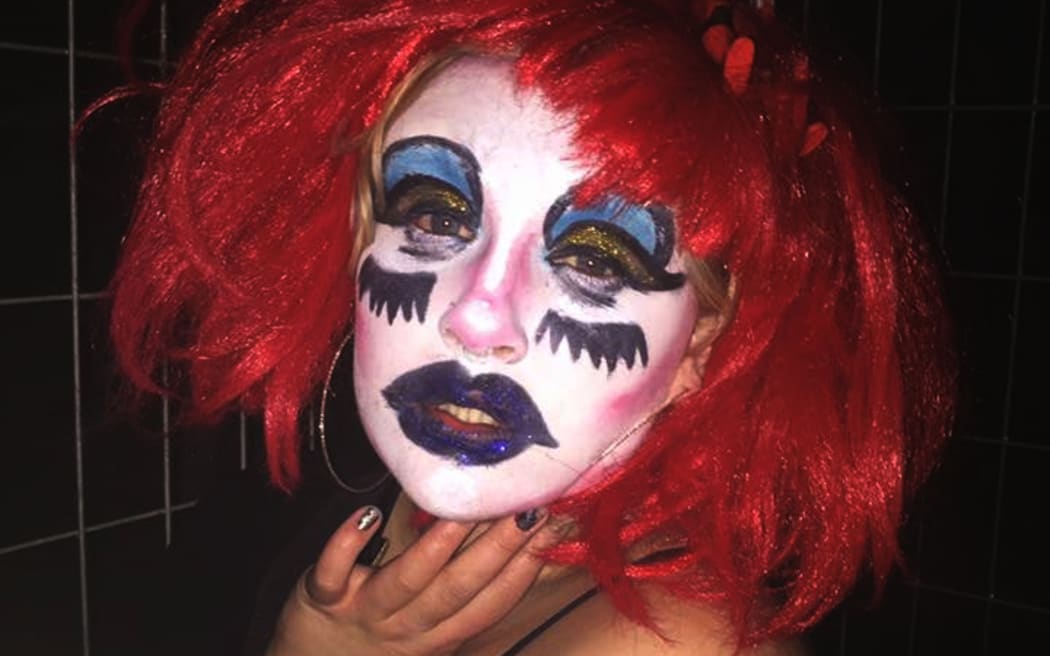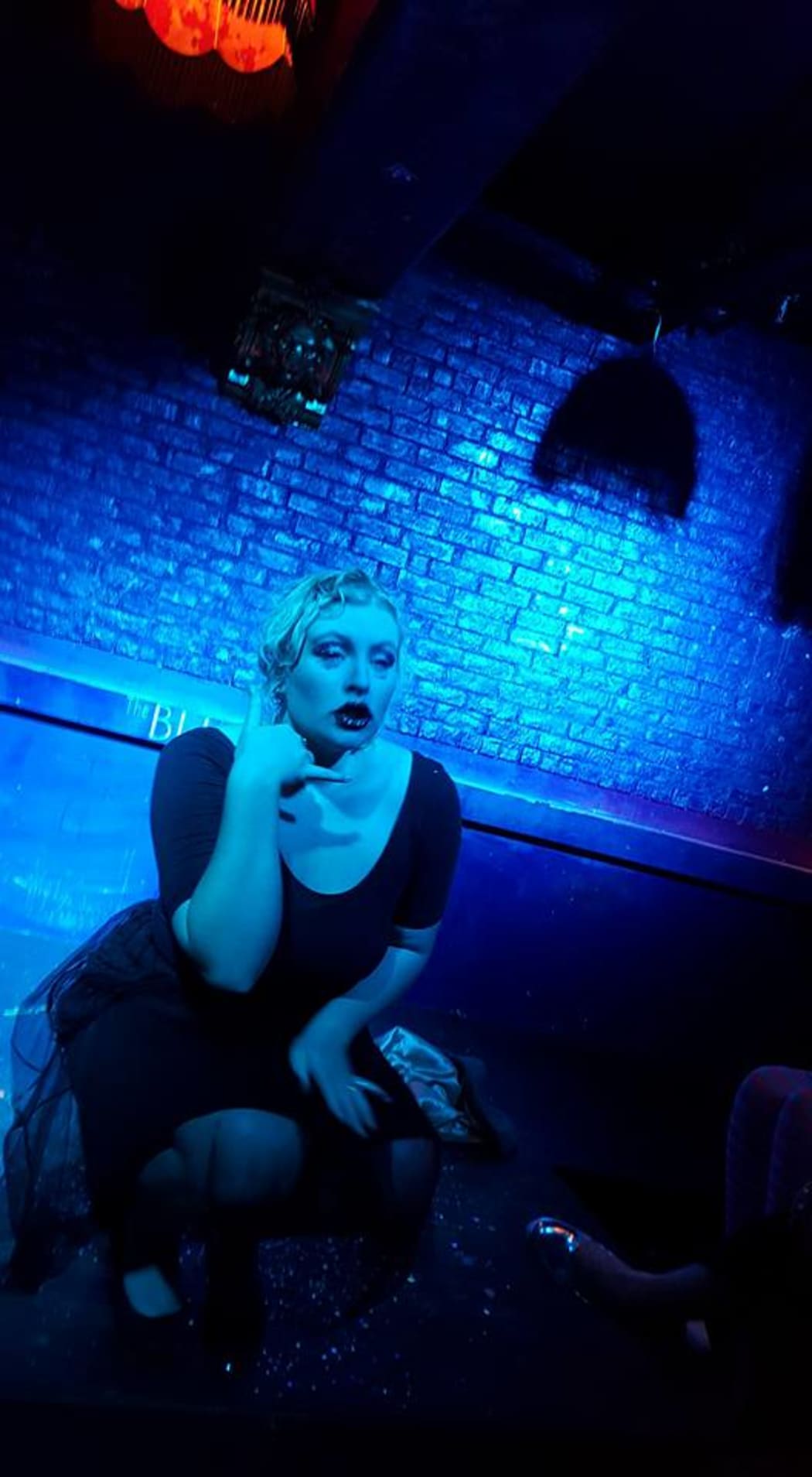A new breed of drag performers is emerging in Wellington’s LGBTQ nightlife. Story by Ashna Sholehpak.

When Chloe McCartan performs in drag, she goes by the name Soap. Photo: Supplied
A crowd descends into an underground club on a Friday night.
Drag queens in six-inch heels, glitter and all; a handful of drag kings, women dressed as men; and a diverse group of Wellington’s LGBTQ community in half-drag and everything in between. They are all there to experience or be part of the show.
Backstage the queens are getting ready to take the stage and 23-year-old artist Chloe McCartan is among them. She goes by stage name “Soap”.
Chloe draws on lips to cartoon-size proportions. As she’s looking in the mirror, transforming her face and embracing the heightened sense of fabulousness, she explains: “I don’t know what’s going to happen on my face until it feels done - and then I add glitter.”
She’s known as a “bio queen”, not a drag queen, but a drag performer nonetheless. A cis-gendered woman, she dresses up in an exaggerated manner, employing many of the aesthetics and techniques typical of drag, and this gives her a heightened sense of empowerment that enables her to question the gendered ideals that are placed upon her as a woman in society.
Drag, for Chloe, is about boundless self-expression. She’s been a drag performer for only a year, but has a dance and theatre background, the strict conventions of which she’s trying to unlearn. For her drag is formless.
Nerves and insecurity come moments before, even though she’s been performing since she was at school. She brushes them off, explaining she feels a duty to women everywhere to do this.
Soap pushes her way onto the stage to cheers from the crowd. The darkness that surrounds her is broken as a spotlight appears, flooding her in blue. The bass kicks in.
***
Drag has always been an important part of LGBTQ culture, giving gay and transgender people the ability to express themselves in extreme and exaggerated ways, something they have not always been able to do due to the pressures of society bearing down on them. It’s as much about art, self-expression and exploration as it is about making statements about gender to educate and entertain.
Beginning with women wanting to part of the hysteria of drag, bio queens first emerged as a force on their own when the feminism movement began to take hold. They have always had a strong presence in the US and UK and hold an integral role in drag culture there. They’ve become more common in New Zealand in recent years too.
Political and subversive, it exists to represent femininity in its many forms and continue to question ideas around gender, femininity and the expression of these concepts.

Soap performing at Wellington's Ivy Bar. Photo: Supplied
“I love performing on drag stages because it gives me such a great opportunity to say very visually ‘This is what MY femininity looks like’,” Chloe says.
Drag can be reductive when representing femininity as being solely about beauty; women come in many sizes, shapes and forms and place value on vanity very differently. She feels a responsibility to change this and believes the focus should be on what you are saying as a performer rather than what people are seeing.
“Coming from a theatre background it’s about what I’m saying. For me, identifying as woman, and performing womaness takes a lot of the power back in terms of choosing when and how to be super-feminised and fabulous.”
She says screwing with “stupid ideas” about gender is an important part of her drag.
“Drag brings into the spotlight how much of a performance gender is every day even on a domestic level - deciding whether or not you need to put some foundation before going to the supermarket because you have a couple of pimples. My larger-than-life character certainly occupies the space necessary to say things as well as show them and make people listen.”
Traditional drag queens have not always been as welcoming as they are today and the struggle for acceptance has taken time.
Miss Capital drag runner-up Alex Kachfi who goes by the stage name “Kelly Fornia” explains: “Now bio queens are slowly making their entrance into the scene and I couldn't be happier because that's what drag is about, it's about the creativity and acceptance of all people.”
However, that this inclusiveness has not always been present, he says.
“I think back in the day, drag queens weren’t too accepting of bio queens, ironically gender was a factor in this. Drag was seen as men being women, seeing a woman dressed as a drag queen almost seemed threatening in a sense and encroaching on our territory.”
Alex says Wellington’s LGBTQ scene is incredibly diverse for a small city and includes drag in every shape and form from king, queens, bio queens everything in between, along the whole spectrum of androgyny and genderless representation.
“Our generation of drag is so accepting of bio queens because of an understanding that drag is not limited to queens. There is so much more out there and it brightness our community in ways we didn’t know possible.”

